We’re always coming across cool news, videos, etc. that don’t need full dedicated articles. We want to share them though, so we’ve started bundling them together in roundup updates.
1. Yakuza Dev Team Announces Project JUDGE Worldwide
The studio behind the Yakuza series announced a new IP last week. Surprisingly, it was a global announcement, so there’s no doubt it’s headed overseas!Scott Strichart, one of the localizers of the Yakuza games, mentioned on Twitter that he was “pushing for a global announcement for a long time” so that we “aren’t left to wonder if it’ll come west.” This is a lot different from just a few years ago when overseas fans of the Yakuza series had to beg and plead for the games to be localized.
2. Support 428: Shibuya Scramble!
Speaking of games that had to fight for a localization, 428: Shibuya Scramble is out now in English on PS4 and Steam (EU has to wait one more week for their PS4 version). The PlayStation Blog posted an interview with the game’s localization director, David Kracker, where he discusses how hard he worked to get us this game.428 is the most “Japanese” game in our back catalog, so when I joined Spike Chunsoft, I made it my mission to localize it.
428: Shibuya Scramble is a visual novel featuring real actors and the intertwining stories of five characters. Mato & I went searching for a copy the other day and couldn’t find one anywhere, so we’ll be ordering online. If you’re fond of niche Japanese games like this, please buy a copy! If we show our support, maybe more games like this will be released in the future 😀
3. Fans are Deciphering God of War’s Runes
The newest God of War game is so amazingly good and fun. It takes place in the age of Norse gods, and Norse runes are all over the game – inscribed on walls, used as tattoos, and seen on weapons and armor. A group of fans discovered that by using a combination of Old Norse and Contemporary Icelandic, those runes have meaning.Here’s a transliteration of the runes on the back of the SteelBook Case:
And there’s so much more where that came from! People have deciphered tattoos, murals, and even a special message from Santa Monica Studio on the collector’s edition box. Read more about it here.
4. Funny English in old Japanese PC Games
I’ve been looking at Japanese PCs recently (stuff like the PC Engine, MSX, and FM 7) and found a bunch of old games with funny English. Here are a few:It’d be cool to do a full gallery for stuff like this in the future.
5. XSEED Games is Hiring a Localization Associate
XSEED Games, who localized one of my favorite games of all time (Game Center CX / Retro Game Challenge), is looking for a localization associate. Here’s the job listing.They posted about it on Twitter, too. And… they made a little mistake in the promo image:
6. Old-timey English is a Hurdle for Chinese Gamers
Octopath Traveler does not have a Chinese localization, so some Chinese gamers are playing it in English. However, there’s a character that speaks in heavy old-timey English, which is very difficult for non-native English speakers to understand. Some are trying to muddle through it with the help of language books and guides:There’s more discussion on this subject over on the unofficial Chinese Nintendo twitter.
7. Interview with Nerdbot
Mato was interviewed by Nerdbot recently. He talks about his inspiration for Legends of Localization articles, translations he wishes he could go back and change, and why humor is a very important part of learning. Read the full interview here.That’s it for this roundup. It’s my goal to keep these more of a regular thing, so if you find anything that’d be a good match for a roundup update, let me know on Twitter or in the comments!
If you liked this article, check out these ones too - they cover lots of other light topics all in one shot.



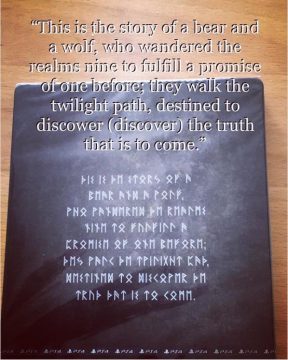
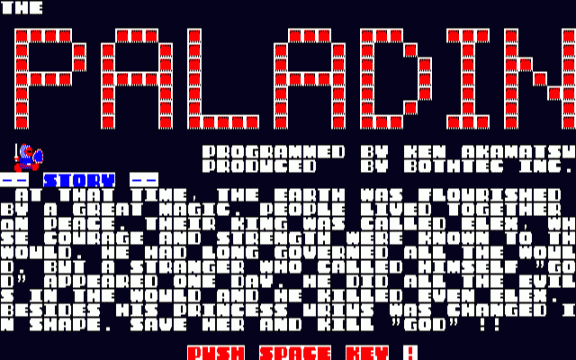
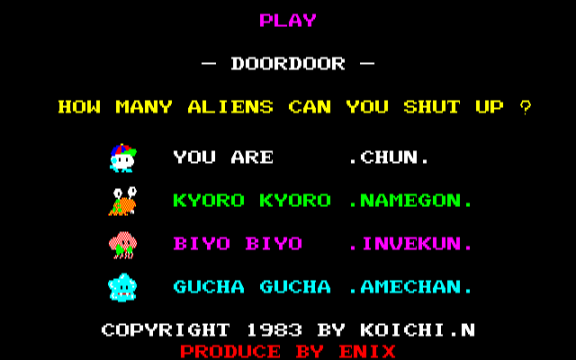

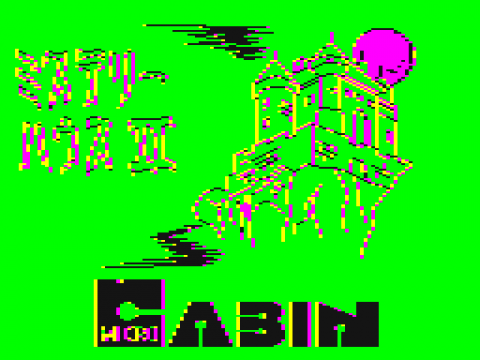

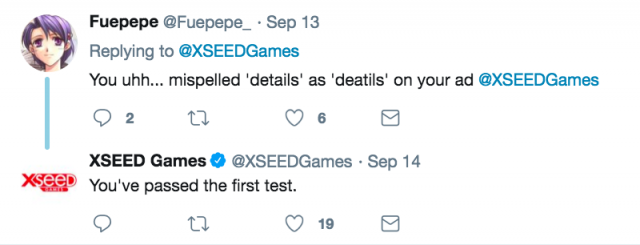
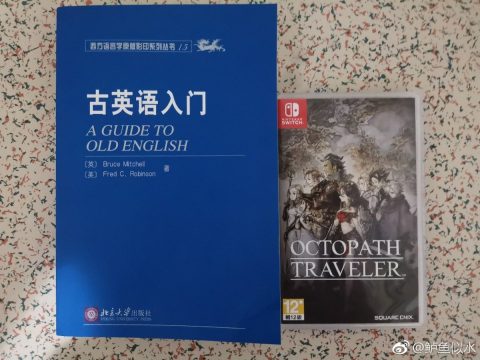
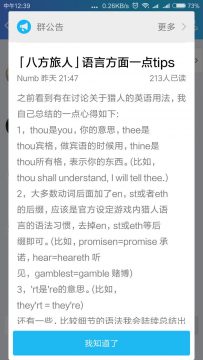

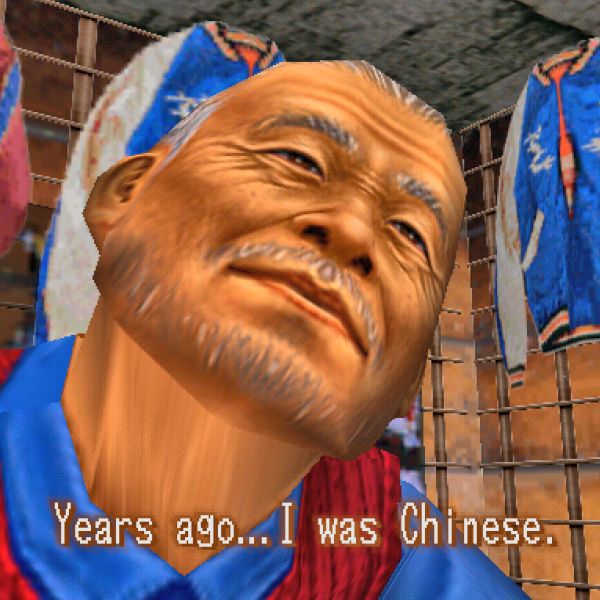


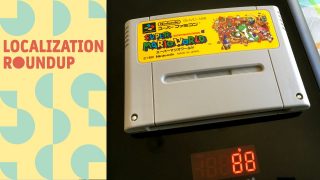
#6: Not helping things is how the old-timey dialogue sprinkles in archaic “-eth” and -en” in an incredibly inconsistent way.
Ha’anit’s my favorite character, but I hate how the localizers didn’t put much thought into this aspect of the game.
Aw, man. That’s the worst. If you’re going to use early Modern English, then at least look up how to do it rather than just throwing in some old sounding stuff and pretending it’s early Modern English. One could probably also find some-one online who’d love to help out for free.
But anyway, a bit of information for Mrs Mato: early Modern English isn’t Old English. Old English is from about a thousand years ago, and is considered a different language. Even Middle English, which was about 500 years ago, is considered a different language. Early Modern English, however, from only about 300 years ago, is still considered Modern English…despite being about as different from current Modern English as Icelandic is from Old Icelandic (Norse)…which ARE considered separate languages. Eh, who needs consistency? Sorry if that was more information than necessary… :þ
No problem! That’s really helpful, I’ll update the article to be more clear 😀
They actually /did/ put thought into it, and she’s actually fairly consistent, but what makes it a bit hard to read is that they came up with a style of speech that doesn’t actually exist. H’aanit speaks in a fictional combination of Early Modern English and Middle English but also conjugates some verbs in ways that weren’t actually ever done — but she’s pretty consistent about it.
There’s actually a pretty good analysis of it at around post #51 in this thread: https://gamefaqs.gamespot.com/boards/204212-octopath-traveler/76815928
Responding late, but that’s one of the things the Chinese response tried to address in the answer image. It’s the last point you can see in the image.
“Most verbs have en, st, or eth added to the end. It’s probably how they decided officially to represent the hunters’ speech habits in the game. Getting rid of the en, st, or eth or whatever else should suffice.”
If you drag the ugly Mystery House screenshot into Google Images you get results for “graphic design”. Good job, deep learning.
That looks like an image that would take advantage of composite NTSC artifacting to get more and different colors on a television-style CRT than the hardware actually supported. Apple ][ and very early PC CGA games did this, but this would be the first example I’ve seen in a Japanese game, assuming that it actually is what I’m describing. Showing artifact colors on an RGB monitor resulted in an image with clashing colors. The original King’s Quest is a prominent example of a game that supports this color mode.
Precisely what I was thinking it was, yeah. I’m not sufficiently familiar with the colour modes available to old Japanese PCs to say for sure, though.
This doesn’t look like composite artifacts though (these are pure 1-bit RGB colors, which is precisely what you would *not* get from artifacts). Also I don’t recall hearing about any Japanese computer using composite (aside maybe some MSX machines?), though I could be wrong there.
The impression I get is that the game is likely configuring the palette wrong… or possibly the wrong video mode altogether (it looks like it’s meant to be monochrome with pixels half as wide?)
I DID eventually muddle through that it said “Mystery House” but good grief that was hard to read.
#3: At least in that screenshot of the runes, that’s not a translation but a transliteration. It’s written in mostly normal English, but using a different alphabet. These are mostly the same runes that Tolkien used for Dwarven things in The Hobbit, where he also just wrote in English using them. https://en.wikipedia.org/wiki/Runes#Runic_alphabets
Ah, I see! Thanks, I updated the article.
Fan translation, but it’s a spectacular game.
https://www.youtube.com/watch?v=_PHLGejfTfM